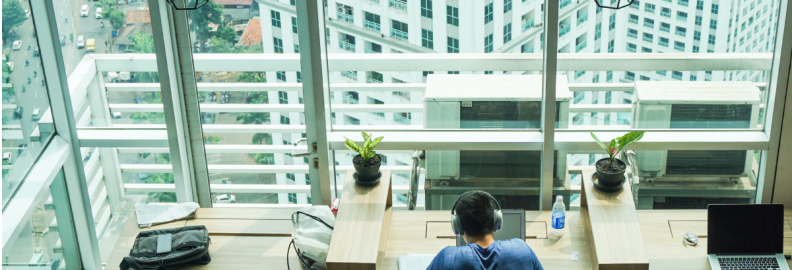Not that long ago, remote work was one of the exclusive benefits offered by employers. Today it become a necessity we are still learning to cope with. As the pandemic spread, forcing the world to go into lockdown, business organizations were left with no other option than to switch to online working. This transition is currently changing the global job markets and shaping the future of work.
To gain more perspective and insights on what is happening on the Romanian market we conducted the Remote Work Study 2020 in partnership with Impact Hub Bucharest.
Regardless if you are an employee curious to find out how well (or not) the companies have adapted to remote work, or an employer wanting to uncover remote work trends to bring improvements in your system, here are some interesting remote work statistics to help understand the trends of 2020.
How well companies in Romania dealt with the transition to remote work
When the pandemic started, the first critical step was to guarantee employees’ safety and ensure business continuation fast by figuring out the logistics of remote work. Employees were not only encouraged to take their laptops but also office equipment that would create more comfortable work conditions at home. From there it was all about integrating new tools and systems that would make the remote work possible.
Overall, 81% of companies in Romania consider they were either well or very well prepared for transitioning to remote work. (State of Remote Work Study 2020)
This had a direct impact on the quality of the experience for the employees:
69% of respondents perceive their remote work experience during COVID-19 as positive. (State of Remote Work Study 2020)
Impact on productivity while working from home
One of the most common concerns for employers is remote worker productivity. Surprisingly, it turns out that work from home is more efficient as data suggest:
45% of remote employees say they’re more productive when working from home. At the same time, 42% sees no difference in their productivity levels. (State of Remote Work Study 2020)
Increased productivity among remote workers can be easily explained by having more freedom to take short breaks, less stressful work environment and fewer distractions while working from home.
Remote Work Pros & Cons
Like everything, remote work has its pros and cons, but let’s focus first on the good sides. It’s clear that remote work kept us all safe which was our shared need in 2020. Flexibility in work hours highly increased from the part of the employer, as a side effect of working from home. We now needed to take care of families, attend to other responsibilities and we were given the freedom to do so. Long term, this might have an important positive impact on the trust relationship employee-employer. Another reason why remote work is attractive is the opportunity to cut the time spent on commuting to work. It also gives us more freedom to arrange our time and no need to follow any office dress code.
What about the downsides of remote work?
45% of respondents point out loneliness and social isolation as the biggest challenges of remote work. (State of Remote Work Study 2020)
When we add to it that not having a centralized office can make simple communication between employees far more challenging, we can expect high levels of disengagement.
That’s why now, it’s more important than ever for leaders and managers to learn new ways of team management and pay more attention to the flow of information and keeping human relations alive.
Remote Work trends and future predictions
As we carry on with adapting to the current situation there is the important question of what the near future holds for us. As the pandemic continues, many employers in Romania are considering reducing their office space to avoid unnecessary costs.
(State of Remote Work Study 2020)
So, what further impact will it have on the policies of companies and what does it mean for their employees?
For now, 51% of organizations declare that they will build their work around a hybrid-remote policy. (State of Remote Work Study 2020)
Meaning when the restrictions ease down, they will allow employees to combine work from home with days they will be working at the office.
It seems that the pandemic forced employers to match with expectations of the workforce, that for many years expressed the preference towards a more flexible work system (Most Desired Employers Study)
It is too early to say if remote work is here to stay after the pandemic but so far, we are still discovering its highs and lows.
Now, since all of us had to go through this work-life integration, learn new tools and autonomy, it will be hard to give it all up. That is why we think that the future will bring more flexible models where people know how to be more efficient and appreciate more the possibility of live interaction with colleagues.








